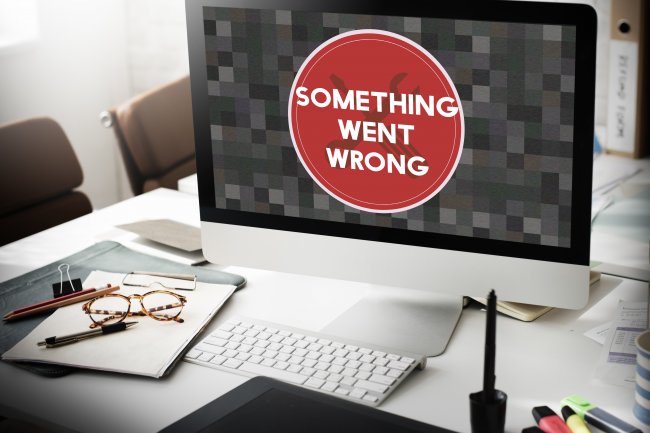The 9 Key Elements That Make A Brand Strategy Work
A strong brand can be built with the help of a good brand strategy. It says what kind of business you are and what your long-term goals are. So, it's very important to get it right. Here are some tips for you.

A brand strategy is a plan for building a brand in a way that fits in with the business strategy. "People don't buy things and pay for services. They buy relationships, stories, and magic"
A brand strategy is a long-term plan that focuses on making a brand successful. Businesses use the plan to show customers and potential customers how they want to be seen. It helps you figure out who you are and gives you a plan for how to talk about it. Once a business has done it well, customers will think of the brand and what it does even if they don't know who the business is.
Eye-catching, meaningful, and memorable brand elements help customers recognize and connect with the brand, which leads to a relationship of trust in the long run. Branding strategy is what helps customers understand a company or product, buy it, and come to depend on it. A successful business can't stay in business without a strong brand strategy, which takes time, work, and dedication to build.
9 KEY ELEMENTS OF BRAND STRATEGY
One good place to start is by learning what the main parts of a brand strategy are. Below, we list the 9 most important parts of brand strategy and explain in detail what each one means:
- ANALYSIS OF THE MARKET
A market analysis is a look at both the size and quality of a market. It looks at the size of the market in terms of both volume and value, the different types of customers and how they buy, the competition, and the economic environment in terms of entry barriers and rules. Market analysis tells you about businesses, customers, competitors, and other factors in the market. You can also figure out how supply and demand for a certain product or service work together. With this information, you can make better decisions about how to market your business.
Businesses can learn important things about a market with the help of market analysis. If you are starting a business, want to learn more about your current market, or just want to look at new markets, you can use a market analysis to find and evaluate the opportunities and risks of a market. On the basis of market analysis, you can come up with specific marketing plans and put your business idea into action successfully.
- TAGLINE FOR YOUR BRAND
A tagline is a short, easy-to-remember phrase or motto that is meant to sum up your company's larger goals and purposes. You can't avoid a tagline if you want to give your customers an experience they'll remember and stand out from the competition. They are short sentences of two to four words that you write to tell your customers what your business is all about. In a few words, it tells what your brand is about.
Your tagline should show who your brand is, what it stands for, and what it stands for in a creative way that people will remember. Your business can use a tagline for a lot more than just branding. It can have a direct effect on the growth of your business. It will make the people you want to buy from you think of you before any other business. So, when they need something you sell or a service you offer, you will be the first person they think of. A tagline or slogan makes it easy for people in your industry to recognize your business.
- BRAND PERSONALITY
Brand personality is the same as giving a brand a personality. Personification is a natural way for people to think. Brand personality is when customers think of the brand in terms of human traits, emotions, or goals that they can relate to. It is a set of emotional, mental, and behavioral patterns that are unique to a brand and stay the same over time. In short, the personality of your brand is how you would describe it if it were a person. It can be used to make decisions about how a brand looks and what it says.
It is mostly made up of tone, voice, associations, and all the other things that make a person unique and give them an identity. It is a plan that helps a company or organization shape how people feel about its product, service, or mission. A company's brand personality is meant to make a certain group of customers feel something in order to get them to do something good for the company. In order to give a brand a personality, brand managers have to learn a lot about their customers and come up with a personality that makes people "like, know, and trust" the brand. That is, creating a personality that draws in the target audience right away by making them feel comfortable, familiar, scared, or respected.
A good brand personality makes a brand more like a person, giving it depth and nuance and making it easier for its target audience to connect with. Brand personality is part of your brand that your customers can relate to and build a relationship with. Because of this, it plays a big role in getting customers, making them loyal to the brand, and building the value of the brand. One of the most important ways to set your brand apart from the competition is through its personality. Your brand experience will be both recognizable and memorable if it has a clear personality.
- WHO YOU'RE WRITING FOR
Your target audience is basically the group of people you want to buy your products or use your services. It can be described by things like age, gender, income, education level, or location, among other things. User personas are made by businesses based on what they know about the people they want to reach. The decisions they make about marketing campaigns are based on these personas. Your marketing will work better if you find your target audience and try to connect with them.
To find a target audience, you have to figure out who is most likely to be interested in your service or product. For customers to feel like they have a connection to a product, service, or brand, they need to be able to relate to the company's message in both content and tone. If you know who you're trying to reach with each campaign, you can make sure you speak their language.
Research is the only real way to find out who your real target audience is. For example:
- Think about what problems or needs your product or service solves.
- Check out your rivals.
- Find out more about your current customers.
- BRAND VOICE
Brand voice is the personality of your brand and how you present it to the world. It means how a company adds personality and feeling to its communications.
With brand voice, your audience can learn about and understand your brand as you start a conversation. It gives business leaders the chance to show the unique personality of their brands and connect with the audience in a natural way. It makes it easy for your readers and audiences to recognize your brand no matter what you do or where you are. The tone of voice you use on your company's website, social media, and content should be the same and match your brand.
You can think of your company's brand voice as its voice. It includes everything from the words and language you use to the personality and images you want to evoke with your marketing materials. It's an important part of making sure your message stands out from the rest and leaves a lasting impression on potential customers.
- BRAND PURPOSE
A great purpose should show up in everything a brand does, from making products to how it treats customers to how it should market itself. Having a unique brand purpose gives you authority and gives your brand a deeper meaning. It also makes your brand stand out from other brands. It's the reason the brand exists other than to make money. If you want a brand purpose to be really strong, it should be about the product or service itself. Remember that the goal is to get customers to feel something about your brand, which will make it a better choice. Your brand's purpose adds value to people's lives and to society as a whole. It's all about product-led initiatives that try to make money and help people at the same time. If you work in education, your goal might be to help kids and change their future.
- AWARENESS GOALS
A brand awareness strategy is a set of marketing techniques that help a company get its message out, grow its audience, and make sure that its target market knows and likes its brand. Having people know about your brand also helps you reach a number of business goals and objectives. It can help you reach more people, get more people to visit your website, build brand loyalty, and find new leads. Brand awareness is at the top of the marketing funnel, which shouldn't be a surprise. Brand-awareness campaigns try to reach a lot of people. Brand awareness is important for buying decisions because consumers need to be able to remember the brand in the context of a specific product category. Brand awareness makes it more likely that the brand will be in the set of brands being considered.
- BRAND VALUES
Your business's success will be guided by your core brand values. Your brand's most important thing is what it stands for. They're the center of everything, including your brand's look (design), message (voice), and relationships (customer service). Your brand's Proposition, Personality, and Purpose will help you figure out what its values are. Without a set of values to guide you, your brand will look like any other business and not like a unique and recognizable brand. This will hurt your growth and sales.
You don't choose Coke over Pepsi because it tastes better (or vice versa). It doesn't. All of the difference is in our heads. You buy it because you bought either the "happiness" or the "youthfulness" brand, depending on which value you think is most important.
So, if you want to build deep and meaningful relationships with your customers that last for years, bring you repeat business, and raise the value of your brand, you need to clearly define your brand values so that your audience has something to connect to, something to stay loyal to!
- BRAND VISION
The goal of a brand is its vision. It can be a single goal or a collection of goals and aims. The brand vision is about where a brand is going and what it wants to do in the future. It comes from your brand's core, but it's about more than just the present. A good brand vision for your business will help guide your business strategy and show where you want to be in the future. Your vision should say something unique about your business, look to the future, and make it clear what you can give to the community.
Before you can write a brand vision statement, you need to know and describe your company. In a world where customers want to feel like they know the companies they buy from better, you can't leave people guessing about what your brand's goals are. Your vision statement should show who you are and what your brand stands for. Vision statements don't have to describe your products or services in detail, but they do have to be a part of what makes your business special.
Amazon's Vision Statement says, "Our goal is to be the most customer-focused company on the planet. We want to create a place where people can find and learn about anything they might want to buy online.
"To make the best products on earth and to leave the world better than we found it." This is Apple's vision.
What's Your Reaction?














